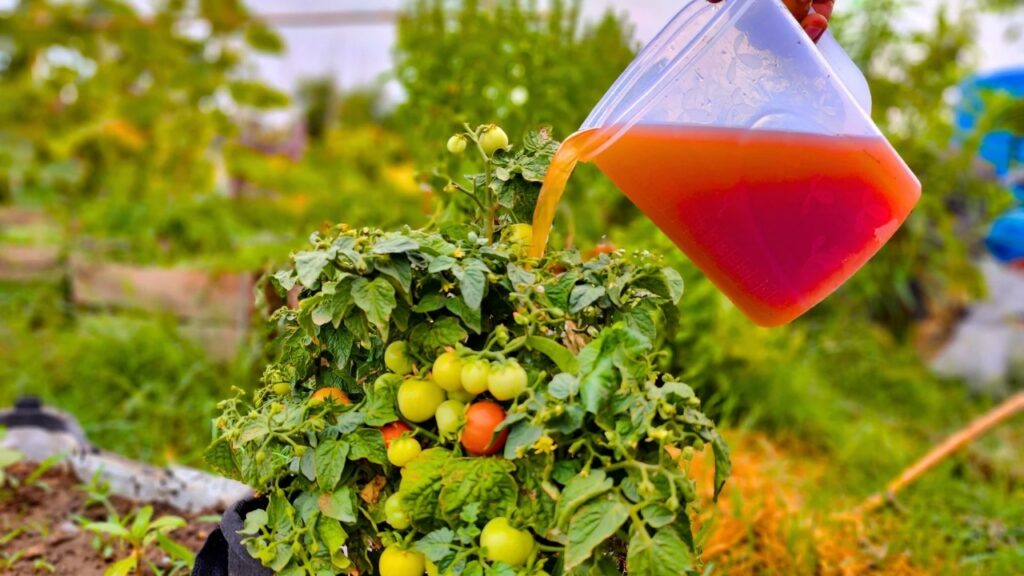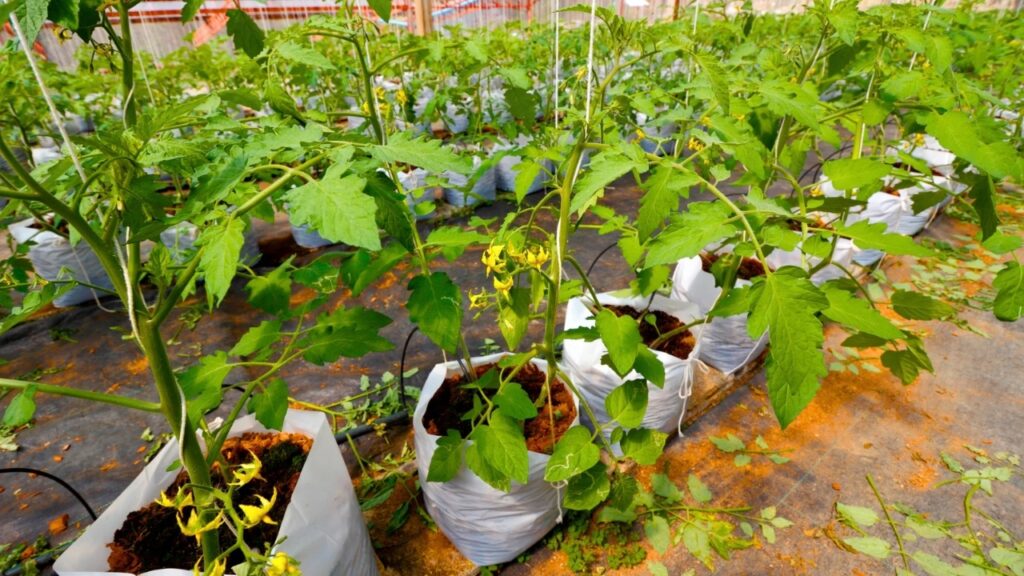Indoor tomato gardening is well within the realm of possibility. This is how you can get a tasty product.
This winter, don’t buy the boring tomatoes at the store. You could also grow your own salad-sized veggies inside.
With a little extra care, tomato plants can grow, bloom, and ripen indoors, but they do best when they are outside. To me, growing tomatoes indoors is a hobby that blends the two fields.
You won’t get enough, but you should get some tasty little tomatoes to put on sandwiches, sprinkle on vegetables, or add to your favorite snacks to make them taste better.
When you follow these ten important tips for growing tomatoes at home, you’ll be able to enjoy many delicious treats, especially in the winter.
Powerful, intense illumination is needed.

When tomatoes are grown indoors, a system of cultivation lights is used instead of sunshine. It’s not often that sunshine inside, especially in the winter, is strong enough to give tomato plants the nutrients they need to grow and produce fresh fruit.
To stay alive, a tomato bush needs more light than it gets, even from a south-facing hole.
You can help plants grow quickly by putting a basic set of industrial lighting, or growing light bulbs, a few inches above the plants’ canopy. You can find these blooms at stores that sell landscaping and home goods.
To grow successfully indoors, tomato seeds and young plants need an extra 18 to 20 hours of light every day. Plants with fruit that is starting to get dark and ripe can be moved to a south-facing spot because they don’t need as much sunshine anymore.
Choose small and compact varieties.

It is best to grow tomato plants inside that say “bush” or “patio” on the box. Because they were picked to be small and bushy, these plants do well in pots.
Many traditional and standard cultivars, like “Celebrity,” are way too big to grow properly in the home. Cherry tomatoes, grape tomatoes, Roma tomatoes, and small slicing tomatoes are likely to grow on patios or in bushes.
Some great types of plants to grow indoors in containers are “Tumbler,” “Patio Choice Yellow,” and others. Fruit is a feature of small crops that are grown for sale. Now all you have to do is put them somewhere well-lit and wait for the berries to reach their peak.
When seedlings are sprouting, they need heat.

Putting heat under seed starting trays will speed up the growth of tomato plants that are grown indoors. To keep the seedling plates warm, just put them over a low-heat furnace, heat surface, or microwave top.
Just the right amount of warmth will start growth within a few days. It will be possible to pick fruit earlier if the seeds sprout faster.
Put the plant in a big pot.

When the plant is about six inches tall and has a lot of leaf groups, it’s time to move it to a bigger planter with a new planting mix. The length of the vessel must be at least fourteen inches wide.
For best results, tomato plants should be grown in pots that are twenty inches longer and lower. This means that the roots can spread out more in a bigger container.
Also, make sure that the bottom of the container has holes for ventilation. Place the container in a pot or dish to catch any extra liquid that may leak out of the drainage holes.
Find a reliable warm spot.

In the house, temperatures between 70 and 80 degrees Fahrenheit are best for tomato growth. Fans or drafty doors will send cool air through tomato plants that like it warm. Find a place to grow that is out of the way of cold air currents.
Also, keep an eye out for blasts of steamy air coming from the thermostat ducts. Seventy to eighty degrees Fahrenheit are the best temperatures for tomato plants to grow.
Don’t let your plants get too wet.
Growing tomatoes indoors requires more water than growing garden-variety plants outside. Feel the ground every day to see how much water it needs. If the earth is wet, don’t water it. Instead, look at it the next day.
If the ground is dry, water the plant until water escapes through the drainage holes. Use a big dish or bottle holder to catch more liquid.
If you don’t want the dirt to get wet, empty the sphere or dish within thirty minutes of showering it.
Use fertilizer often.

Tomatoes grown inside do best when they are fertilized on a daily basis. Add a gradual-release granular plant protein to the planting mix when it’s time to plant, and add the granules at the times listed on the package.
Instead, use a farm fertilizer mixture that dissolves in water to feed plants once a week and watch them grow. Regularly feed your plants with fertilizer. to give planter-grown tomatoes back the vitamins they lose when they get too much water.
What you can do to help pollinate plants.
Indoor plants need your help to make sure they get pollinated. To tomatoes, making fruit is possible without the help of pollination from other plants because they can do it themselves.
Being careful to stir your plants every day once they bloom is like letting the wind push plants that are growing outside. If you gently shake the fruit, it will ripen and attract pollinators. The affects of a blower that spins can be similar.
Plants should be rotated as needed.

Plants should be rotated often to get flowers and strong, straight stalks. Plants grown under ceiling growth lamps don’t need to be moved, but a tomato plant that is doing well in a bright room would benefit from being turned every seven days. If you don’t turn the plants, they will twist to face the light.
Bet on Your Tomato.

Sometimes tomato plants grown inside are less stable than plants grown outside when it comes to their stalks. Supporting themselves with a wooden staple sunk about three feet into the ground next to the main root helps plants handle the weight of fruit that is getting ripe.
Carefully use pieces of fabric to attach the embryonic stalk to the stakes. Add more links as the plants get bigger.

